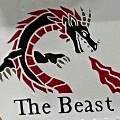Turbine Bonanza setting the pace?
-
Members Online
- phrogpilot73
- Guy123
- Aerodon
- Fly Boomer
- PeterB
- Rmfriday
- GeeBee
- DRH4249
- Alan Maurer
- Nico1
- Scooter
- jrwilson
- Justin Schmidt
- redbaron1982
- Greg Ellis
- EricJ
- TCC
- Marc_B
- T. Peterson
- Jetpilot86
- Ryan ORL
- BrentS
- Daily
- Steve Dawson
- 0TreeLemur
- PeterRus
- Marcopolo
- Dieselman1220
- Shrobby
- M20F
- marcusku
- eman1200
- tankles
- atpdave
- 201er
- Bolter
- Mooney in Oz
- MikeOH
- M20S Driver
- gabez
- hubcap
- Nathaniel_H
- N177MC
- raymondscott0321
- Ragsf15e
- markazzarito
- Bunti
- daytonabch04


Recommended Posts
Join the conversation
You can post now and register later. If you have an account, sign in now to post with your account.